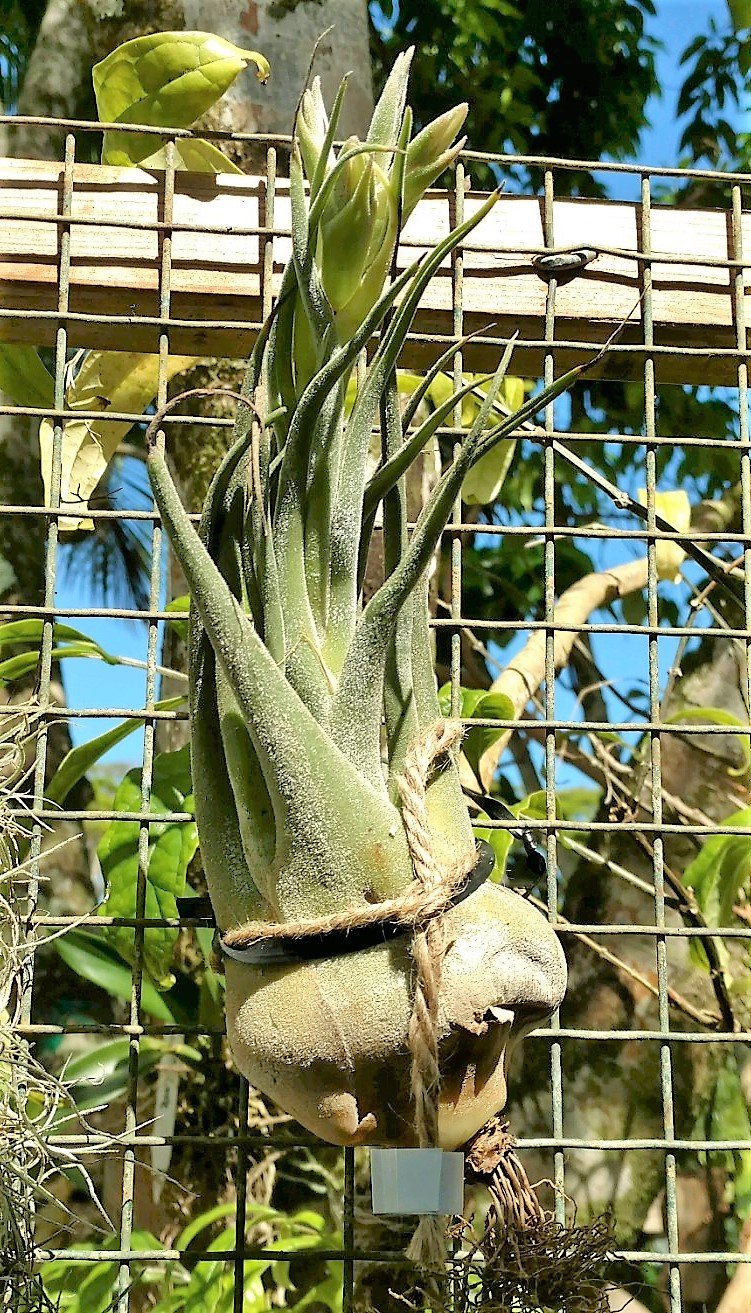Time for Tillandsias
What's a Tillandsia?
Tillandsia is a genus name of 650 species of air plants related to bromeliads. These unique and sometimes prehistoric looking plants do not require soil to thrive. They are often epiphytic, meaning they are found growing on other plants without hurting the other plant.
Their natural habitat is the forests, mountains, and deserts of Central and South America, which makes them right at home in most places on Kauai.
"Air Plant" 101
The name “air plant” is deceiving as they cannot live on air alone. While they can handle a lot of water at once, it is suggested that they be placed where they will not be consistently inundated with water, as standing water on the plant can cause rot to form.
Tillandsias are often attached to something, or within a glass globe or terrarium, and so misting with water is encouraged. This is not the most effective way to water your tillandsia. The best way for them to absorb water is to dunk them in a basin of water for 20-30 minutes. This allows the roots to truly suck up enough water so that they don’t have to be misted every day. A tillandsia well placed in a warm and humid environment may never need to be watered, but its important to check on them, especially if the weather has been warm and dry.
When considering where to place your tillandsia, think of the amount of water, but also light. They ideally would be receiving bright filtered light. It’s better to be in the shade than in direct sun, though generally the thicker silver-leaved tillandsias such as Tillandsia xerographica can handle more sun, and are more drought-tolerant.
Mounting Your Tillandsia
Tillandsias can be mounted on driftwood, sea shells, pottery, lava rocks, etc. It’s important not to use pressure treated wood that contains copper, as the copper is toxic to the plant. Attachment methods include wire, fishing line, twist ties, staples, even glue!
If stapling, its important not to staple through the plant, but around it. If using wire, do not use copper wire as it is toxic to the plant. If using glue, make sure it is waterproof! Liquid Nails or E6000 are good options, even hot glue! Do not use super glue.
Regardless of how and where you mount your tillandsia, it’s important to consider how you will be watering it. If you are unable to remove the tillandsia or easily hose it down with water, you will likely need to be misting it every day, if its not outdoors in a location where it receives rain.
Tillandsia Maintenance
It’s good practice to fertilize your tillandsias to keep them happy and nutrient fed. Because their roots are not in the soil, they don’t have an easy source of food. We must provide it for them! It is suggested that you use a bromeliad fertilizer, and foliar spray or soak them 1-2 times a month. If they are mounted on a tree outside, you will likely only need to do this once a month, as they are more closely in an environment they evolved in. Another option is soak them in pond water if this available to you. A 20-30 minute dunk in pond water should be sufficient once a month.
Once tillandsias are mature, they produce beautiful vibrant flowers! This adds to their cool and creepy complexity. Like bromeliads, once a tillandsia flowers, it will not flower again. However, they will produce keikis, or pups, that will grow into a full-sized plant, and eventually flower again.
Each plant will typically produce between 2-8 keikis, so it’s good to keep them around after flowering! Wait until the keiki is 1/3 to ½ the size of the mature plant before removing. They can remain together in a clump instead of separating, but its good practice to remove the dried up and dead leaves of the older mature plant. A tillandsia will continue to produce keikis for years after flowering, so its good practice to keep them around if you would like to grow your own keiki plants.
Get them at the nursery!
We have dozens of tillandsias in stock now on our new Tillandsia display! Most are only $8. We do have some larger specimens such as the beautiful and drought-tolerant T. xerigraphica, and the eerie octopus-like T. bulbosa. Come by soon to check them out! This article was written by Alli, Kauai Seascapes Nursery sales associate.









